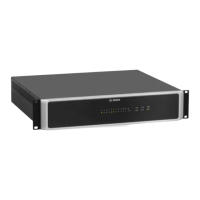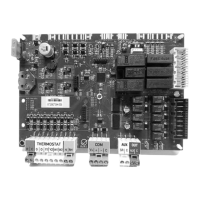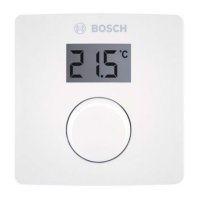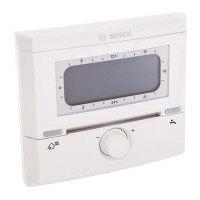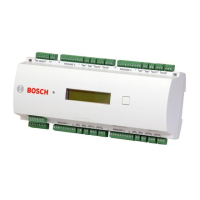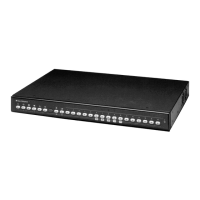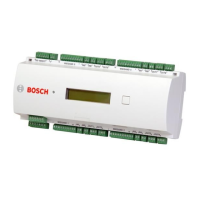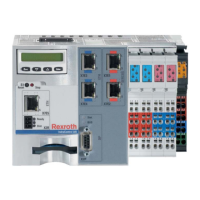For ease of installation, the connector can be removed. Several loudspeakers can be
connected until the point at which the total power consumption of the loudspeaker network
corresponds to the nominal power value of the amplifier channel, where the rated load
resistance of the power amplifier outputs is not to be exceeded. The nominal power values
and the rated load resistances of the outputs can be found in the documentation of the power
amplifier.
Notice!
Conductor cross-section
The maximum voltage drop must be less than 10% to avoid alarm signal attenuation and
ensure a sufficient signal level of the pilot tone for (optional) EOL modules.
Danger!
It is possible that during operation shock hazard voltages (> 140 V peak value) may be present
at the outputs. Therefore, the connected loudspeaker zones have to be installed in accordance
with applicable safety regulations. When installing and operating 100 V loudspeaker networks,
compliance with the VDE regulation DIN VDE 0800 is mandatory. Especially, when 100 V
loudspeaker networks in alarm system applications are concerned, all safety precautions have
to be in accordance with the safety class 3 standard.
Call station
The four
Call STation (CST) BUS ports connect call stations with the controller. This are 8-
pole RJ-45 ports that integrate the power supply, control interface (CAN bus), and audio
interface. Every CST BUS supports up to 4 call stations. In total 16 call stations can be
connected to one controller.
Notice!
Using twisted pair cables for CAN (4, 5), AUDIO CONTROLLER TO CALL STATION (3, 6) and
AUDIO CALL STATION TO CONTROLLER (7, 8) connections is mandatory.
8:
2:
4: CAN_H (+)
5: CAN_L (-)
1 8
7:
1: +24V DC
3:
6:
AUDIO CALL STATION TO CONTROLLER -
AUDIO CALL STATION TO CONTROLLER +
AUDIO CONTROLLER TO CALL STATION -
AUDIO CONTROLLER TO CALL STATION +
GND (CAN_GND)
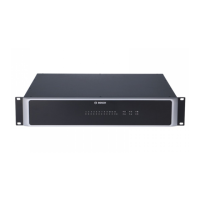
